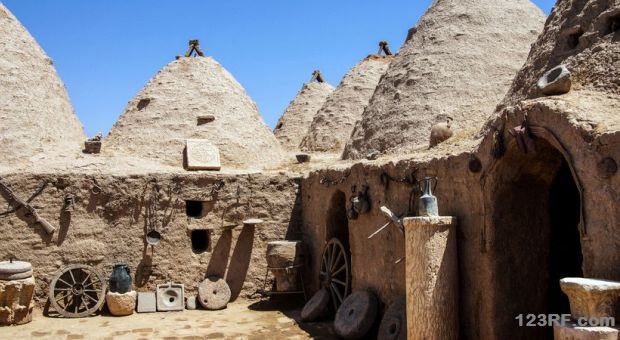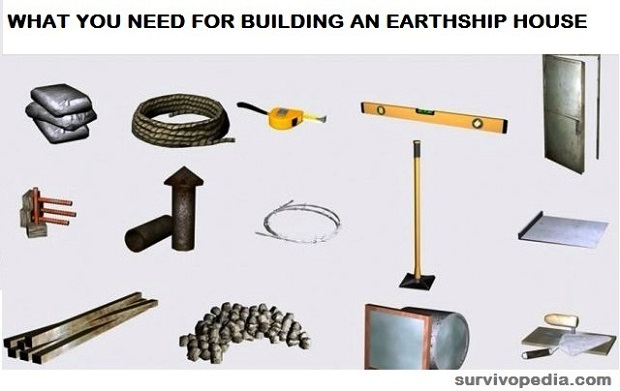
If you are planning to bug out to a remote location, you probably think about building a permanent home that will remain unnoticed and able to withstand many kinds of attacks. But would you consider that the cheapest survival shelter is also the best? Would you start building an earthbag house?
There’s a reason why the military uses earthbags to make bunkers in emergency situations. Earthbag homes are resistant to bullets, durable, and far less expensive (less than $20.00 per square foot) than using stone or other materials.
If you have not considered earthbag homes, then you may be surprised at how much this tried and true technology has to offer.
Choosing a Place for Your New Home
If you build at the top of the hill, you can also place more rooms underground and then plant fruits and vegetables on the roof Creating the Shape and Planning Rooms
Historically speaking, many earthbag homes tend to have something of an igloo or dome shape. When combined with wire, concrete, and wood frames, you can also build square, rectangle, and other conventional shapes.
If you plan to go with a rounded shape, the walls will curve inward, which will improve strength; but also create unusual room shapes. In many cases, you may need to modify existing furniture or build something entirely new to fit these rooms.
If you have ever driven in an older style Volkswagen Bug vs. a conventional box shaped car, then you will have at least some understanding of how different living in a curved space can be vs a straight one.
When planning rooms for a rounded earthbag home, keep in mind that you will always be trying to draw a balance between wasting room by creating conventional spaces and deciding what you can adjust to in a curved space.
From a survival perspective, you may be best served by going with a rounded igloo shape since it will be more durable and easier to disguise amid hills and other rounded land features.
During the process of planning room sizes, you should also keep in mind the relative strength of the materials being used and the way weight bearing walls may differ in an earthbag home.
Before you commit to any given plan, it is very important to have your plans reviewed by an architect or contractor that has experience in building earthbag homes.
Preparing the Ground and Foundation Elements
As with any other home, you will need to account for water, heat, sanitation, a cellar, and a strong foundation. You can use earthbags in the construction of your cellar and also create underground rooms with relative ease.
This is also an ideal time to build in passive heating and cooling elements. For example, if you are going to rely on solar power for heating, this may be a good time to look for ways to pipe water underground or rely on other heat storing technologies.
Needless to say, you should also make sure that sewage system lines, leach fields, wells, and power sources are in place before you begin construction on the earth house itself.
Securing Materials
Outside of ice igloos in the extreme northern climates, you will not find cheaper construction materials than earth houses.
To build an earth house, you will not need much beyond heavy cloth bags, soil, heavy plastic sheeting, and glass for windows, concrete, and wood for framing. If you are planning to store away the items you need on a limited budget you can start by putting aside bags and plastic sheeting, and then concrete, wood, and glass.
It will also be of some help to set aside wiring for electricity, sockets, plumbing fixtures, tubing, and anything else that will make your home comfortable and livable.

Special Roof Features
Unlike conventional homes, you will have a chance to use roof areas of earthbag homes for growing plants and even for defense purposes.
For example, if you build the earthbag home at least 50% underground, the curved roof can easily be planted with vegetables encased in poisonous vines, thorny bushes and other plants. Just make sure that the soil on the roof is deep enough to prevent roots from digging in and damaging the plastic layer on top.
It should be noted that some earthbag dwellers discovered that they had a hard time keeping soil from washing off the plastic layer of the roof. When you use plants in this area, they can easily anchor the soil down with their roots, and also the vines can attach to the surrounding ground. You can also use large leafy plants to provide shade and create a ground cover that will make your home invisible from the air.
When it comes to inexpensive building materials and relatively easy construction methods, few can rival earthbag homes. Even though this technology is often used in emergencies and has been used in military bunkers for decades, few people have adapted it for permanent living.
If you are planning to build a survival home, earthbag homes should be at the top of your list of types to consider.
This article has been written by Carmela Tyrell for Survivopedia.
No comments:
Post a Comment
Note: Only a member of this blog may post a comment.